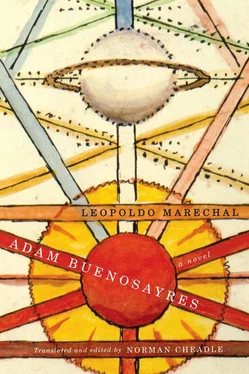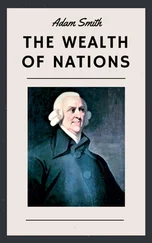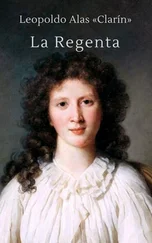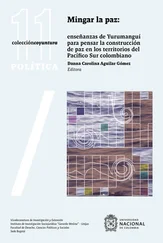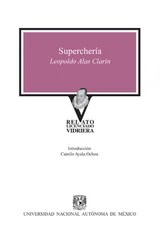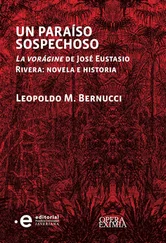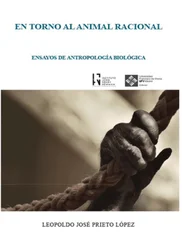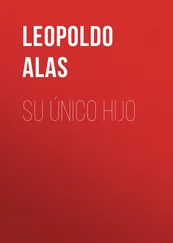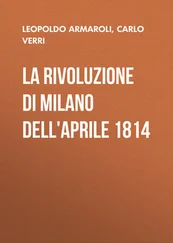BOOK ONE, CHAPTER 1
1 “ El pañuelito blanco / que te ofrecí / bordado con mi pelo .” “El pañuelito” was a popular tango brought out in 1920 by the famous Juan de Dios Filiberto and his Orchestra. Music by Filiberto (1885–1964). Lyrics by Gabino Coria Peñaloza (1881–1975). Irma will sing two more snippets of the same tango.
2 In 1536 Pedro de Mendoza named the original settlement Santísima Trinidad [Holy Trinity] and its port Santa María de los Buenos Aires.
3 The Riachuelo (“brook, small river”) forms the southeastern boundary of the city proper and is an important feature of the port of Buenos Aires.
4 Avellaneda is an industrial working-class suburb located to the south of the Riachuelo. Belgrano is a well-to-do residential area to the northwest of downtown Buenos Aires.
5 Bernardo Rivadavia (1780–1845) and Domingo F. Sarmiento (1811–1888), two founding fathers of the modern liberal Argentine nation. Sarmiento’s book Facundo: Civilization or Barbarism (1845) has quasi-official status as a foundational text of Argentine national identity.
6 La Jove Catalunya (its original name in the Catalonian language) was group of Catalonian nationalist-separatists founded in 1870.
7 These children would be playing soccer with a ball improvised by stuffing an old sock or stocking with rags.
8 “ Fue para ti, / lo has olvidado / y en llanto empapado / lo tengo ante mí .” In the original: lo has despreciado (scorned) rather than olvidado (forgotten), according to José Gobello ( Letras de tango I, 41).
9 River Plate and Boca Juniors are to this day two rival soccer teams among the many teams in Greater Buenos Aires. The English introduced soccer to Río de Janeiro (Brazil), Montevideo (Uruguay), and Buenos Aires in the late nineteeth century; hence, the English team names, as well as many Hispanicized soccer terms: gol, referí, pénalti , etc.
10 Evaristo Carriego (1883–1912): Buenos Aires poet whose verses sang of ordinary people and their cares. He helped create a mythology of suburban types. Jorge Luis Borges in turn mythified the poet in his essay Evaristo Carriego (1930) (Borges OC I, 97–172).
11 “ Triste cantaba un ave, / mi dulce bien, / cuando me abandonaste …”
12 In the original, “cada objeto buscó su cifra”: each object sought its cipher or code. Adam’s metaphysical worldview stems from Neopythagoreanism and Neoplatonism and their derivatives. Numbers, codes, logos — in a word, the symbolic order — precede and give form to the manifest, material world. This runs counter to the modern view of the semiotic/symbolic as a set of arbitrary signifiers assigned descriptively to the materially existing world.
13 Empedocles (c. 493–c. 433 BCE) was an important pre-Socratic philosopher, the first to oppose a pluralistic theory of being to the Eleatic conception of being as unitary and immobile. According to Empedocles, two contrary impulses — Love (Philia) and Strife (Neikos), translated by Marechal and by Barcia (154n) as love and hate — work on the four “roots” of the All (fire, air, water, earth) and make them mingle and separate, thus causing mortal things to arise and perish ( Oxford Classical Dictionary [hereafter, OCD ] Clarendon, 1961).
14 Anaximander (c. 610–540 BCE) held that the origin of all things — the Divine Infinite, eternal and ageless — surrounds and governs the innumerable worlds. Each world is the product of a number of pairs of conflicting opposites that separate themselves out from the Infinite and, in his words, “pay due compensation to each other according to the assessment of Time for their injustice” ( OCD ). Hence, the “guilt” Adam attributes to the differentiated things in existence. Anaximander is the first to conceive the universe as a cosmos subject to the rule of law ( OCD ).
15 The name Solveig may be taken from Henrik Ibsen’s play Peer Gynt (1876) in which Solveig is the obedient elder daughter, as noted by Navascués ( AB 103n) and others. The surname Amundsen evokes the famous Norwegian discoverer of the South Pole; the Amundsen family is based on the Lange family (see 644n1), also of Norwegian provenance.
16 “El amor más alegre / que un entierro de niños.” Adam’s couplet occurs as single verse in Marechal’s “Poema del sol indio” [Poem of the Indian Sun] from Días como flechas (1926) [Days like Arrows] ( OC I , 113). Adam goes on to explain why the burial of a child is a happy occasion. Barcia (158–9n) amplifies Adam’s explanation by referring to a belief in Argentine folk culture that a dead child’s soul, being free of sin, goes directly to heaven, where s/he will intercede in favour of the other family members. However, the original poem by Marechal is a bitter-sweet ode to the “Indian” sun of America; the poet’s evocation of this folk belief can hardly be construed as a lesson in naive Christian theology, as both Adam and Barcia do.
17 Maipú is a small rural town in the interior of the Province of Buenos Aires, about 280 kilometres south of Buenos Aires. Marechal spent his childhood summers there.
18 “Angelito que te vas / con una gota de vino, / Angelito que te vas / con una flor en la mano.” Verses of a traditional folk song sung at funerals in rural northeastern Argentina. In the song, the dead child is asked to pray for his godparents and for his siblings. As Director General of Culture from 1944 to 1950, during the Peronist government (1946–50), Marechal promoted the study and diffusion of Argentine folklore (Barcia 160n).
19 De profundis (“out of the depths”) are the first words of the Latin Vulgate version of Psalm 130: “Out of the depths I cry to you, O Lord. Lord hear my voice! Let your ears be attentive to the voice of my supplications!”
20 Adam is referring to the passage in the Revelation to John of Patmos in which the Lamb (Christ) opens the sixth of the seven seals: “the sun became black as sackcloth, the full moon became like blood, and the stars of the sky fell to the earth as the fig tree drops its winter fruit when shaken by a gale. The sky vanished like a scroll rolling itself up” (Rev 6:12–14). The last image is rendered in Saint Jerome’s Vulgate version as: “et caelum recessit sicut liber involutus.” Later, in Book Two, Adam will cite another passage from the Latin Apocalypsis . Thus Adam has apparently been reading the medieval Catholic version of the Bible, rather than a modern vernacular translation. The autobiographical basis for this odd circumstance would be Marechal’s “return” to Catholicism and his involvement with the Cursos de Cultura Católica (CCC), a Thomist college or university founded in 1922 and transformed by papal decree in 1947 into the Instituto Católico de Cultura . According to the Argentine Esteban Trento’s erudite and informative webpage Santo Tomás de Aquino , the CCC’s mission was “to teach subjects in philosophy, history of the Church, and the Holy Scriptures to young students” because they were being systematically denied these teachings by the “secularism, positivism, and liberalism prevailing in the Argentine university system” (http://www.geocities.com/tomistas/c_c_c.htm.Accessed10Jan2006). Secularism, positivism, liberalism are what Adam, in Book Two, sums up under the term modernismo .
21 The name of Adam’s pipe, connoting the poetry of courtly love (Eleanor of Aquitaine was the patroness of several famous twelfth-century poets), is most likely taken from the short story “Eleonora” by Edgar Allan Poe, to whom Adam refers a few pages later. The standard Spanish version of the name Eleanor is Leonor , but Marechal uses a Hispanicized spelling of the French Éléonore , since he would have read the story in Baudelaire’s translation (though Baudelaire tries to conserve Poe’s spelling: Éléonora ). In Poe’s story, the first-person narrator-protagonist swears to his beloved as she approaches death that he will remain faithful to her and “never bind [him] self in marriage to any daughter of Earth” ( The Works of Edgar Allan Poe . Vol. 2 of The Raven edition. Project Gutenberg online). Adam, for his part, will desert the “earthly” Solveig in favour of her “heavenly” form. Moreover, Poe cites words of the thirteenth-century Catalan mystic Ramón Lull as an epigraph to his story: Sub conservatione formae specificae salva anima [“The salvation of the soul depends on the conservation of the specific form”]; Lull’s sentence might well serve Adam in his project to conserve the form of Solveig in his poetry and thus “save” her from mortality.
Читать дальше
